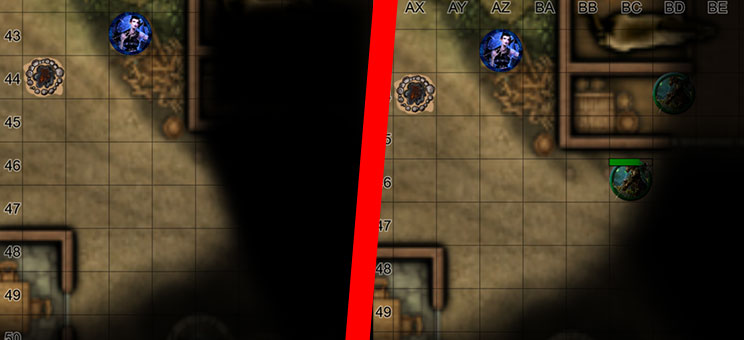Make Tactical, Memorable Combat
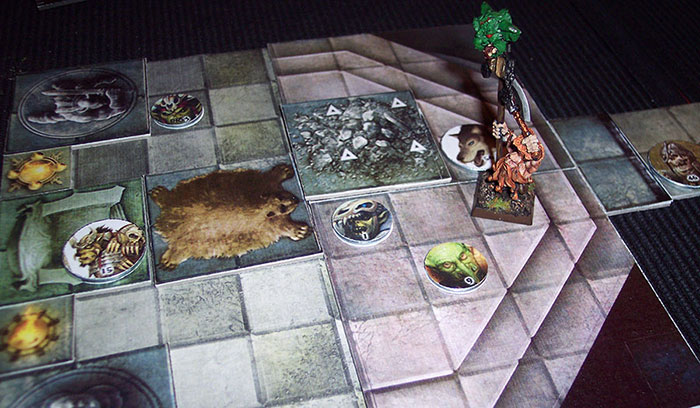
Are those little demigods some call PCs running all over your encounters without breaking a sweat? Maybe they've even had the audacity to call the encounters “easy.” 5th edition has really ramped up the power levels of the players, and as the DM you may find it difficult to meaningfully challenge them. You can always spend more XP on your encounter budget to increase the challenge, but giving all your combats the “Deadly” difficulty also makes the fights a lot more swingy, where a couple bad rolls can spell a sudden TPK. Instead, try adding the following tactical elements to your fight which has the dual benefit of making combat more challenging without increasing the encounter budget, and engages your players more by forcing them to cooperate and pay attention even when it's not their turn.
Use a grid map if you're not already. It's technically optional, but it's impossible (or at least nearly so) to have meaningful tactics, flanks, positioning, etc. if there's no map. Even if you're a DM with eidetic memory that can memorize where everyone is perfectly, as I've said in a previous article your memory isn't as good as you think it is, and your players being unable to see the map in your mind robs them of the ability to make meaningful choices based on that information.
Add high ground and low ground. Instead of a flat plane, you should have 3 layers of terrain that's at least 20 feet above, and 20 feet below. This helps break up sight lines, make good perches for archers, and hidden pits for flankers. You can also introduce alternate routes and paths on these higher and lower layers that allow you to bypass chokes. It also introduces fall damage to your combats, and makes abilities that push and pull more useful. Be careful not to break up sight lines along these routes for longer than 30-60 feet, as missing out on a round of attacks can sometimes make the flank not worth it.
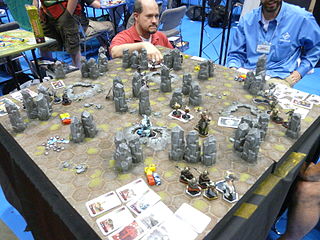
Add cover and LoS (line of sight) blockers. At least 1/4 of your map should be a mix of cover and LoS blockers. Cover can include things like logs, bushes or dense foliage, ramparts, stalagmites, boulders, a broken cart, anything that confers the ½ or ¾ cover bonus. LoS blockers are walls, trees, pillars, or any cover that's large enough to completely obscure you and make you untargetable. Have your monsters make stealth checks using cover to gain surprise rounds or set up ambushes. This gives your squishier monsters (and players) something to hide behind. Players that ignore cover will quickly learn the hard way about the advantage it gives. Place about an equal amount of cover on each side of the map, but whichever side is defending or has the more entrenched position will generally have more.
Add difficult terrain and hazardous terrain: pits, acid, spikes, pendulums, anything either side can use to hurt or hinder the other side. Pushing enemies into pits or off cliffs does a lot of damage, and no amount of AC can protect you from a Shove action. Falling just 20 feet deals 2d6 damage and knocks you prone, falling into spikes or lava does even more.
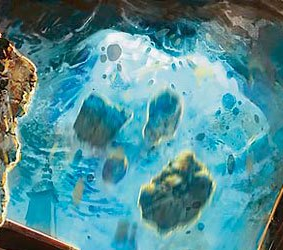
Add traps at choke points and flanking routes that the monsters avoid. Be careful with this, as a hazard that the monsters can use that the PCs cannot gives a numerical advantage to the enemies. In 4th edition traps actually had an XP cost for your encounter budget, and while 5th has done away with this in favor of simplification, the math is undeniable that a trap is like adding an invisible enemy that attacks once and then dies (or multiple times if it can reset). That said, discovering a trap's trigger can also make it usable by the PCs.
Use more monsters of lower CR (instead of a few high CR monsters) and mix their roles: tanks (high hp/ac), dps (high damage), ranged, and casters. A balanced party of players are more effective, and the same is true for the monsters. Having a tank tying up players in melee while archers and mages sling spells from safety and flankers attack their back row from behind is much harder to deal with than a bunch of orcs that run in and die. Also make good synergistic use of monster abilities. If a monster has a special ability, either use it or don't include that monster. A lot of their XP budget is based on them using that ability, so a monster that doesn't use its abilities just ends up being lower CR.
Have the terrain change during combat. Chandeliers can fall, trees can be knocked over, cliffs and ceilings can crumble. Cover will also become damaged and destroyed as it's hit from attacks that miss their main target. Forcing players to switch up their cover or have a safe area become dangerous is a good way to throw a wrench in their battle plan. Just make sure it makes sense (or is really cool), and the same thing affects the monsters as well (unless they're triggering it, at which point it becomes a trap).
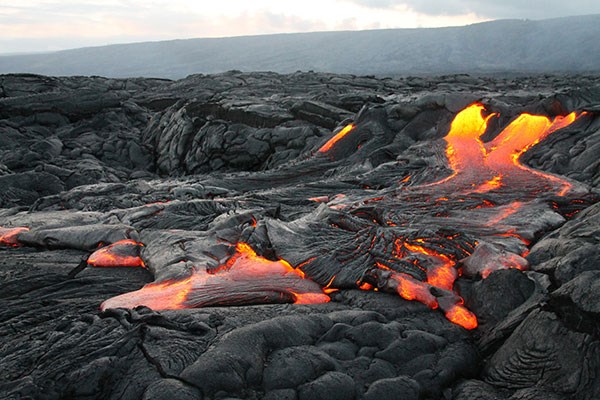
Use the flanking or facing rule (DMG 251). If you're using facing, consider adding the ability from 4e to use a reaction on any attack to change your facing (triggers before attack, like Shield). In 4th it was after a move, but also in 4th you couldn't split up your movement. Since threat and opportunity attacks work differently in 5th, it makes it a lot easier to circle around the enemy. Giving them one chance to burn their reaction to prevent flanking makes these rules more realistic and sensible, as in a real combat you generally don't stand still while your opponent circles around you, while still allowing two or more players to coordinate and set up flanking.
A note on "conga lines:" putting yourself into flanking in order to get flanking is bad strategy. Having advantage on your attacks and giving the same advantage to your enemies is the same as just not having advantage to begin with, or can be even worse. You should always be looking for opportunities to get advantage without leaving yourself open to it in return, otherwise don't bother.
Be intelligent with your monsters, even wild animals (with int 3!) use flanking, chokes, and ambushes in real life. Claiming that monsters with low int cannot cooperate or use tactics and must suicidally attack the nearest enemy until they die has no real world parallel whatsoever. Such a monster would quickly go extinct, and the belief that the DM isn't “allowed” to play the monsters well for the sake of realism ends up being the exact opposite. Have your more intelligent monsters actually speak to each other, make callouts, and give each other advice. This is more fun from an RP perspective, and acts as a way to allow your monsters to make more complex strategies or warn each other of danger. They can even use code or other languages to make it harder for the PCs to figure out what they're up to.
Are your players not healing? Use the lingering injuries rule (DMG 272). Being reduced to 0, crits, and failed death saves cause permanent scars and wounds that confer penalties until healed with magic. This can make for more visceral combats, while also making healing more important and difficult to game the “only heal at 0” tactic. Plus it's a use for those restoration spells that might not get used otherwise. There's lots more RP opportunities for a player that has to suddenly deal with the trauma of a lost limb.
Start combatants 60 feet away from each other, with cover or LoS blockers in between. Putting combatants right next to each other strongly favors the side with the highest initiative roll. Making it so the two sides can't actually attack each other in the first round of combat places a greater emphasis on tactical movement and making careful consideration for ranges. There is a reason why tactics games (Final Fantasy Tactics, Into The Breach, Divinity Original Sin) all do this, and it's because going first is a massive imbalance if you're able to start wailing on the other side right away.
If a monster is more than 30 feet away from a player, avoid moving them to within 30 feet (or whatever their speed is) without being able to attack. This gives the player a free first attack. Instead make them come to you, giving you the free first attack instead. Utilize LoS blockers to prevent players from attacking the monster before they get within the monster's speed+reach.
Target weaker players. Even a kobold understands his sling won't do much to the walking tin can, but it'll hurt the guy wearing robes. These players are often glass cannons, able to output a tremendous amount of damage if left unharassed. Moving the focus from the front line to the back line also helps to break up stale choke-points, and forces players to reevaluate.
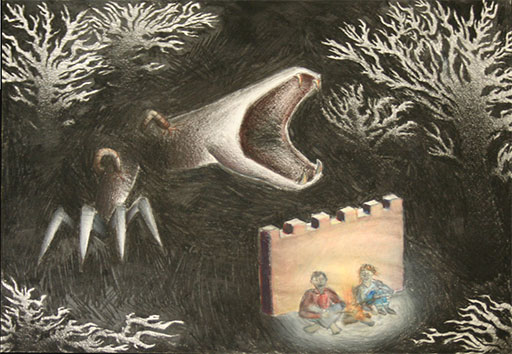
Many monsters, especially ambush predators, will go for the coup de grace if they down a player. They want to get their meal and get out. The threat of a dead player will motivate and create interesting tactical decisions like nothing else, but it may not be appropriate for every table. At the very least, the threat of death can spur your players into riskier situations. Winning all the time without threat is boring. You may also want to consider house ruling how death is handled if you're worried that killing players will ruin your game.
Don't use the common "drink potions with a bonus action" house-rule, this makes potions extremely strong and combat that much easier. Even if your party has no healing spells, those spells are typically a standard action. A common healing potion does the same amount of healing as Cure Wounds. The choice is supposed to be between moving forward and dealing damage, or falling back and recovering it. Allowing them to do both is just effectively giving them more health.
Need more help with your campaign? Check out all the other tools, generators, and articles: https://www.kassoon.com/dnd/
Shout outs: Stacey, Austin Paul, Sarah Burbridge, Lugia, Completely Colorless, Revan#4962, Jane McClintock, Elisa Martinez, Ryan Flagg, JMartins, Jade Arrowood, Sean Kane, Angelo Anderson, yoland katamari, Jamie Ryan Rose, Dave Walker, Rhonda Seiter, Noble Saffron, Alexa Hobusch, Jonathan Lekse, DMMichael7000, Katie White, Subzotic, JollyGamer, Jayden wingler, Yi Tan, Emma Holloway, Ashley Sullivan, Gillian Tolbert, David R Abbott, S.T. Jenkins, Vanda Leipold, Rick Marsh, Brittany DeNicholas, Phillip Hash, Bobbie Crane, Amanda Kettles, Lou Bliss, Treighton, Pythor Sen, Michael Isberg, Nat, Cory Evans, Thomas Wilhelm, Krueger82, BestWorseCaseScenario, Damian Steele, Icarus Unleashed, Mark L, Conall Reilly, Alex, keith oneal rogers, Moss, Ash Harkness, Patrick Natale, Cam Largent, Thaddeus Johnson, Siren, Donavan Guay, AstroLass, Lizzie, Jordan, Rincewind, Michael Hamilton, Rob Hale, Vedie V, Mylon Schroder, Nathan, Joseph Mitchell, Jordan Florez, Robert Rich, Rodney O'Dell, Robin Ellis-Foster, Deanna Pyle, Jess, Lars Yell, Meme Pitt-Melton, Zee Livezey, Kevin, ryan scott, Kerry Melton, Mary Kieser, SallySparrow132, Lunesolace, DJ_Kelf, Naomi B, Millergendraft, Nick Soucy, Ellen Mitchell, Melanie Warga, Jeremiah Walker, Bryan Sheairs, Bryan Kempka, chris wilson, Max Hops, Sarah Holland, Joshua David Maddox, Jennifer Smith, Ray Bissonnette, Joe Dalby, Joline Tran, Nicholas Zamora, ShortyMcgibble, Mr. Vinclair, mtnman1979@aol.com, KFB_Patreon, eric sun, Dani, Bruce Willison, Gundar Wez, Ken Shapiro, Nahellion, Ben Pytlik, Serena Verden, bilbens baggo, Stuart, Brysen Packer, Galygious, Tim Mason, Maxwell Mayer, Gannon Dubay, Thobek, Aaron Teupe, Felix Schmäche, XMrMonkyx ., Miss Zilla M, Jordan Brazeal, Kyle Clark, Jake Lane, Adam Ruiz, Phillip P Torchia, Natalie Luttrell, Stefan Gottschalk's, Remora Jewel, Buffonturtle, jeremy baisch, Zealot23, Shane Andrews, CJMAXP, Chevy Jones, KingHavok1217, Mx Charlie, Shazear, Curran Vallejo, Steve Rosenlund, Leanna Orr, lufink, Ezzela1891, John Nazario, Gary, Gordon Alexander Fallon, Jason Clark, Trey Vickory
Their contribution stands as a beacon of hope for all adventurers!

